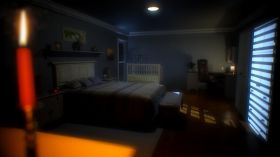

Once he’s inside Union, Sebastian discovers it’s not the idyllic postcard town that Mobius had designed it to be. So far, so hard to follow, but if you think of this unusual backdrop as the horror version of The Matrix and just go along with the mad ride, your enjoyment of The Evil Within 2 will be all the better for it. Trouble is, she’s gone missing inside Union, so Sebastian becomes her only hope and “plugs” back into STEM to save her.

Kidman reveals that Mobius, the nefarious group behind STEM, kidnapped her to serve as the Core for Union: a new STEM world. Waking up in a bar after having a nightmare about his presumed dead daughter, he is informed by his ex-colleague, Kidman, that his daughter, Lily, is alive, but not quite well. “…the gamble by Tango Gameworks and director John Johanas to make The Evil Within 2 more approachable pays off in a big way.”įollowing his harrowing time in Beacon, a simulated world powered by STEM which is very real to those living inside it, Sebastian is a drunk and washed-up cop. Its story is still weird and a little (okay, a lot) unbelievable, but its appreciation of simpler, more traditional themes of family and loss goes a long way towards making it a far more engrossing experience.

Taking place after the events of the first game with the grizzled Sebastian Castellanos again subjected to some good old-fashioned trauma, The Evil Within 2 could have quite easily gone further down the leftfield, but shows much more restraint. Thankfully, The Evil Within 2, the sequel that many didn’t think would happen, knows exactly what it is: a fluid, engrossing venture into the macabre that’s one of the best survival horror games of the year. Highly-stylised (arguably too much so) and a smorgasbord of many different gameplay ideas that never really fluently worked, the common consensus was that it offered glimpses of greatness that were bogged down by strange design choices and a lack of cohesion.Īfter a few hours with the original, I walked away and never looked back – I could see what it was trying to do, but its execution felt botched and as if it had an identity crisis. It isn’t too far a stretch to suggest that Shinji Mikami and Tango Gameworks’ The Evil Within was a polarising game when it released back in 2013.


 0 kommentar(er)
0 kommentar(er)
